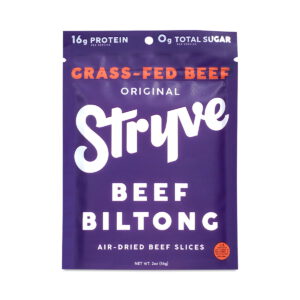- Healthy snacks to keep at your desk
- Meal prep ideas for busy schedules
- Hydration tips for maintaining energy
- Choosing nutritious options for lunch meetings
- Mindful eating practices at work
- Creating a supportive food environment in the workplace
Maintaining a stash of healthy snacks at your desk can be a game-changer for busy professionals striving to maintain energy and focus throughout the day. Instead of reaching for vending machine treats that might be high in sugar and low in nutritional value, opt for nutrient-dense options that will fuel your productivity and well-being.
Here are some healthy tips for stocking your workspace with satisfying snacks:
- Nuts and Seeds: Almonds, walnuts, and pumpkin seeds are packed with protein, healthy fats, and fiber. They provide a satisfying crunch and can keep you feeling full longer. Consider portioning them into small bags for easy access.
- Fruit: Fresh fruits like apples, bananas, and oranges are portable, naturally sweet, and rich in vitamins. Dried fruits, such as apricots or raisins, can also serve as excellent on-the-go snacks, just be mindful of the portion sizes due to their concentrated sweetness.
- Whole-Grain Crackers: Look for options that are high in fiber and made from whole grains. Pair these with hummus or guacamole for a deliciously satisfying snack that’s rich in healthy fats.
- Vegetable Sticks: Sliced cucumbers, carrots, or bell peppers can provide a refreshing crunch. Pair them with a low-fat dip or a nut butter spread for added flavor and nutrition.
- Popcorn: Air-popped popcorn is a whole grain and can be a great low-calorie snack. Sprinkle with a bit of nutritional yeast or your favorite spices for extra flavor without the guilt.
- Protein Bars: If you’re frequently busy, having a few protein bars on hand can be a lifesaver. Look for bars with whole food ingredients and minimal added sugars; homemade options allow you to control the content entirely.
- Dark Chocolate: If you need a little something sweet, opt for dark chocolate (70% cocoa or higher). It contains antioxidants and can satisfy your sweet tooth in a healthier way.
When you’re shopping for healthy snacks, consider local and organic options where possible. Visiting farmers’ markets not only supports local farmers but can also provide you with fresh, seasonal produce. Many local markets now offer organic products which align with health-conscious eating habits.
For online shopping enthusiasts, safety is paramount. Ensure that the websites you use are secure by looking for HTTPS in the URL. Additionally, check reviews and ratings for products to avoid subpar quality. When purchasing bulk items online, be cautious about expiration dates to make sure you’re getting fresh supplies.
By curating a selection of healthy snacks at your desk, you can create a supportive environment that promotes wellness and productivity while combating the temptations of less nutritious choices. Healthy workplace eating doesn’t have to be complicated or time-consuming; with the right snacks, you can maintain energy and focus all day long.
Meal prep ideas for busy schedules
Meal prepping can be a crucial strategy for busy professionals aiming to maintain healthy eating habits amidst a hectic work schedule. By allocating a few hours each week to prepare nutritious meals, you can simplify your daily routine and significantly reduce the temptation to opt for less healthy options when you’re short on time.
A well-organized meal prep routine involves planning, shopping, and preparing meals in advance, ensuring that you have satisfying and nutritious options readily available throughout the week. Here are some detailed strategies to streamline your meal preparation:
1. Plan Your Meals: Start by determining which meals you want to prepare. A good rule of thumb is to choose a few recipes that allow for variety but also use overlapping ingredients. This minimizes waste and reduces shopping time. Aim for a balance of protein, carbohydrates, and healthy fats in each meal. Consider using a weekly planner to jot down your meals:
| Day | Breakfast | Lunch | Dinner |
|---|---|---|---|
| Monday | Overnight oats with berries | Quinoa salad with chickpeas | Grilled chicken with broccoli |
| Tuesday | Greek yogurt with honey and nuts | Turkey wrap with spinach | Stir-fried tofu with mixed vegetables |
| Wednesday | Scrambled eggs with veggies | Lentil soup | Baked salmon with asparagus |
| Thursday | Chia seed pudding | Chicken salad | Vegetable curry with brown rice |
| Friday | Smoothie with spinach and banana | Stuffed peppers | Whole wheat pasta with marinara and greens |
2. Shop Smart: Once your meal plan is ready, make a shopping list. Stick to the perimeter of the grocery store where the fresh produce, meats, and dairy are generally located. It’s wise to purchase ingredients in bulk when possible, as it can be more economical and ensure you have plenty on hand.
3. Cooking and Storage: Set aside a few hours on a weekend or designated day to cook. Prepare your meals in batches, using large pots or slow cookers when feasible. Portion out meals in containers that are easy to grab on busy mornings. Clear glass or BPA-free plastic containers work well; ensure they are microwave and dishwasher safe. Label each container with the content and date for easy identification.
4. Have Snacks Ready: In addition to main meals, prepare easy-to-grab snacks. This could include portioned nuts, cut veggies with hummus, or homemade energy balls. Healthy snacks will help to stabilize blood sugar levels and prevent junk food cravings throughout your busy day.
5. Stay Flexible: Although meal prepping can significantly aid in maintaining healthy eating habits, being flexible can help you avoid monotony. Consider switching up your meals halfway through the week if you find yourself growing tired of the same flavors.
By following these meal prep ideas, busy professionals can ensure that they have nutritious, home-cooked meals on hand, alleviating the stress of last-minute cooking or unhealthy takeout. Adopting these practices not only promotes healthier workplace eating but may also save time and reduce food waste, leading to a more organized and healthier lifestyle overall.
Hydration tips for maintaining energy

Staying hydrated is crucial for maintaining energy levels throughout the day, especially in a fast-paced work environment. It’s easy to forget to drink water when you’re busy, but making it a priority can lead to improved concentration, enhanced mood, and a boost in productivity.
Here are some hydration tips to help you maintain energy during work hours:
- Keep a Water Bottle at Your Desk: Invest in a reusable water bottle that suits your style and functionality. Having it within arm’s reach serves as a constant reminder to sip throughout the day. Aim for a bottle that can hold at least half a gallon, which makes tracking your intake easier.
- Infuse Your Water: If plain water feels monotonous, get creative by adding fresh fruits, herbs, or vegetables to your water. Citrus slices, cucumber, mint, or berries can enhance flavor without added sugar, making hydration more enjoyable.
- Set Reminders: Use technology to your advantage by setting reminders on your phone or using apps designed to track water intake. A simple alert every hour can motivate you to drink more often, ensuring proper hydration throughout the day.
- Track Your Intake: Keeping a log of how much you drink can provide insights into your hydration habits. Aim for at least 64 ounces of water daily, adjusting based on your activity level and environmental factors like heat and humidity.
- Drink Herbal Teas: Herbal teas can be a soothing alternative to plain water. They come in various flavors and can be enjoyed hot or cold, while some can even aid digestion and relaxation, making them a nice addition to your hydration routine.
- Eat Water-Rich Foods: Incorporate fruits and vegetables with high water content into your meals and snacks. Cucumbers, watermelon, strawberries, and celery not only contribute to your hydration but also provide essential nutrients.
Online grocery shopping can be a convenient way to stock up on hydration essentials. When purchasing drinks online, look for products that do not contain added sugars or unhealthy additives. Always check the ingredient list and opt for brands that prioritize natural ingredients.
Moreover, ensure that any beverages you buy are rated for quality to avoid poorly sourced products. Pay attention to shipping and storage recommendations, particularly for items sensitive to temperature fluctuations. For those who enjoy flavored waters or herbal teas, buying in bulk can reduce costs, but ensure the expiration dates align with your usage plans.
Hydration should be a vital part of your workplace eating habits. By taking simple steps to elevate your fluid intake, you can keep your energy levels high and maintain clarity of thought, allowing you to focus better on your work tasks. Prioritizing hydration doesn’t have to be complex; with the right strategies, it becomes a seamless part of your daily routine.
Choosing nutritious options for lunch meetings
When selecting nutritious options for lunch meetings, it’s essential to prioritize meals that are not only satisfying and delicious but also foster productivity and energy throughout the afternoon. Generally, lunch meetings can lead to fatigue, especially if the food is heavy or laden with refined ingredients. By choosing wholesome options, you can ensure that the conversation flows as smoothly as the meal.
Opt for a variety of colorful, nutrient-dense dishes to excite the palate and provide a range of essential vitamins and minerals. When planning a lunch menu, consider incorporating lean proteins, healthy fats, and whole grains. This combination can keep everyone energized and focused for the remainder of the workday.
Here are some healthy tips for crafting an appealing and nutritious lunch meeting menu:
– Lean Proteins: Include options like grilled chicken, turkey, tofu, or legumes. Proteins help regulate blood sugar levels and can prevent the post-lunch slump that often leads to decreased productivity.
– Whole Grains: Choose sides and bases made from whole grains such as brown rice, quinoa, or whole-grain wraps. These complex carbohydrates release energy slowly, keeping attendees alert and energized.
– Fresh Vegetables: Incorporate a variety of vegetables into salads or as side dishes. They add vibrant colors and crunch, as well as antioxidants and fibers that promote good digestion. Consider options like roasted sweet potatoes, mixed greens, or grilled seasonal vegetables.
– Healthy Fats: Integrate sources of healthy fats like avocados, nuts, or olive oil dressing. These fats can improve satiety, keeping everyone satisfied longer and less likely to reach for sugary snacks later.
– Smart Sweets: If dessert is included, opt for lighter options such as fruit platters or dark chocolate dipped strawberries. These provide a sweet finish without the heaviness of traditional desserts, allowing for a satisfying end to the meal without the guilt.
– Hydration Stations: Ensure plenty of water is available, along with herbal teas or flavored waters, to accompany the meal. Proper hydration is vital for maintaining energy and concentration.
In addition, consider the presentation and serving style of the food. A buffet-style setup encourages movement and interaction among participants, while also allowing them to customize their plates according to their dietary preferences.
Finally, be mindful of dietary restrictions and preferences. This not only shows consideration for your colleagues but also ensures that everyone can participate fully in the meal. Offering gluten-free, vegetarian, or vegan options can make your lunch meeting inclusive.
“Eating well is a form of self-respect. The quality of food we consume plays a significant role in our productivity and overall well-being.”
By thoughtfully choosing nutritious options for lunch meetings, you create an environment that supports healthy eating habits among busy professionals while enhancing engagement, concentration, and collaboration.
Mindful eating practices at work
 Practicing mindful eating at work can have a transformative impact on your health and productivity. It’s easy to get caught up in the hustle and bustle of a busy workplace, often leading to rushed meals or mindless snacking. Mindful eating encourages you to slow down and pay attention to the food you consume, enhancing your relationship with food and improving overall dietary choices.
Practicing mindful eating at work can have a transformative impact on your health and productivity. It’s easy to get caught up in the hustle and bustle of a busy workplace, often leading to rushed meals or mindless snacking. Mindful eating encourages you to slow down and pay attention to the food you consume, enhancing your relationship with food and improving overall dietary choices.
Start by setting the stage for mindful eating: choose a designated area for meals away from distractions like computers and phones. This simple change can help shift your focus onto the food itself, allowing you to savor each bite fully. When eating, take a moment to appreciate the colors, textures, and aromas of your meal. Engaging your senses can enhance your dining experience and lead to greater satisfaction.
Another critical aspect is to regulate your portion sizes. Rather than eating straight from a bag or box, plate your food intentionally. This practice not only helps you control portions but also encourages you to be more aware of when you are hungry or full. Aim to chew your food thoroughly and put your utensils down between bites. This method can aid digestion and enhance the flavors of your meal, reinforcing the idea that eating is not just a necessity but an experience to be savored.
Consider your emotional state while eating, too. If you find yourself eating in response to stress, boredom, or fatigue, take time to reflect on these feelings. Address your emotions in healthier ways, such as taking a brief walk or practicing deep-breathing exercises. By recognizing the emotional triggers for your eating habits, you can foster a more balanced and mindful approach to food.
Finally, practicing gratitude before meals can significantly enhance your mindfulness experience. Take a moment to reflect on where your food comes from and the effort that went into its preparation. This appreciation can help shift your perspective toward healthier food choices and inspire a commitment to nourishing your body in the best way possible.
By incorporating these mindful eating practices into your daily routine, you can foster a positive relationship with food and improve your energy and productivity at work. Challenge yourself to explore the nuances of your eating habits, and notice how small changes can lead to significant improvements in your overall well-being.
- What is mindful eating?
- Mindful eating is the practice of being fully present when eating, which involves paying attention to the taste, texture, and sensory aspects of food without distractions. It encourages slower eating and helps individuals develop a healthier relationship with food.
- How can I practice mindful eating at work?
- To practice mindful eating at work, create a distraction-free environment during meal times, plate your food instead of eating straight from the container, and focus on the flavors and textures as you eat. Taking deep breaths and expressing gratitude before meals can also enhance the experience.
- Does mindful eating help with weight management?
- Yes, mindful eating can aid in weight management by fostering a greater awareness of hunger and satiety cues, allowing individuals to make more deliberate food choices and reduce mindless snacking. This practice can help achieve a more balanced and healthy lifestyle.
- Can I still enjoy my favorite foods while practicing mindful eating?
- Absolutely! Mindful eating is not about restricting certain foods but rather enjoying them with full awareness. This approach can enhance your enjoyment of favorite foods while encouraging moderation and healthier choices overall.
- How long does it take to develop mindful eating habits?
- Developing mindful eating habits is a gradual process that can take weeks or even months. The key is to start with small changes, practice consistently, and be patient with yourself as you build these new habits.
- Can mindfulness techniques help with emotional eating?
- Yes, mindfulness techniques can be effective in addressing emotional eating by helping individuals recognize triggers and separate emotional needs from physical hunger. This awareness allows for healthier coping mechanisms and eating choices.
- Are there any resources for learning more about mindful eating?
- There are numerous resources available, including books, online courses, and apps focused on mindful eating. Look for materials from certified nutritionists, registered dietitians, or reputable health organizations to ensure quality information.
Creating a supportive food environment in the workplace
Creating a supportive food environment in the workplace can significantly enhance the health and productivity of busy professionals. By prioritizing nutritious food options and making healthy choices more accessible, employers and employees alike can foster an atmosphere conducive to well-being and efficiency. This can involve thoughtful changes to both the physical space of the workplace and the options available to staff.
Start by evaluating your immediate surroundings. Spaces designated for meals should be inviting and conducive to relaxation. Comfortable seating, natural lighting, and a clean, organized area can encourage employees to take breaks and enjoy their meals without feeling rushed. Consider introducing communal tables, where colleagues can gather over lunch to share ideas and foster connections—encouraging a sense of community while promoting healthy eating.
Stocking kitchens and break rooms with healthy, accessible food options is another critical aspect of cultivating a positive food environment. Clear out junk food from vending machines and replace them with nutritious alternatives. Offer options such as:
- Fresh Fruits and Vegetables: Provide whole fruits like apples, bananas, and oranges in handy baskets. Have pre-cut vegetable packs with hummus or guacamole for quick, nutritious snacks.
- Whole Grain Options: Stock whole-grain options such as granola bars or crackers, which can be filling and beneficial for sustained energy.
- Healthy Beverages: Offer water, herbal teas, or naturally flavored sparkling waters instead of sodas. Hydration plays a crucial role in maintaining focus and productivity.
- Nut Butters: Along with various spreads like almond or peanut butter, consider pairing them with whole-grain breads or rice cakes to provide a nutritious, filling snack.
In addition to stocking food, consider hosting healthy eating workshops or offering nutrition seminars. These initiatives can emphasize the importance of nutrition for workplace performance and give employees practical tips for making healthier food choices at work and during their commutes. Workshops can cover meal prepping, mindful eating practices, and identifying convenient healthy snacks, transforming the way staff approach workplace eating.
When it comes to food safety, it’s essential to establish clear guidelines for food brought from home for potluck-style lunches or shared snacks. Ensure that employees understand the importance of proper food storage and handling. This can include providing a guide to temperature controls, expiration dates, and the safe preparation of shared meals. Creating a checklist of food safety practices can encourage mindfulness among colleagues, ensuring that the environment remains safe and enjoyable for everyone.
Another great approach is to encourage online grocery shopping and meal delivery services that prioritize healthy options. Recommend platforms that specialize in organic, local, or vegan choices, and advise staff on how to find budget-friendly options that don’t compromise on quality. Providing access to these resources can alleviate the stress of shopping and promote continuous healthy eating habits.
Ultimately, the goal of creating a supportive food environment is to instill healthy habits among employees in an enjoyable, engaging way. By facilitating easy access to nutritious foods, encouraging safety practices, and providing valuable resources, workplaces can significantly enhance the well-being and productivity of busy professionals. With a little effort, even small changes can make a profound impact on workplace eating habits.
New Customers Offer!
Free Gift for the new customer
$24 Value, When You Subscrib Visit Thrive Market












